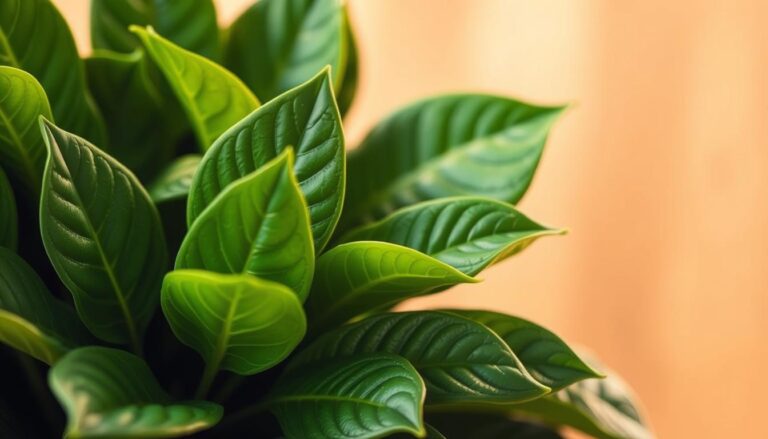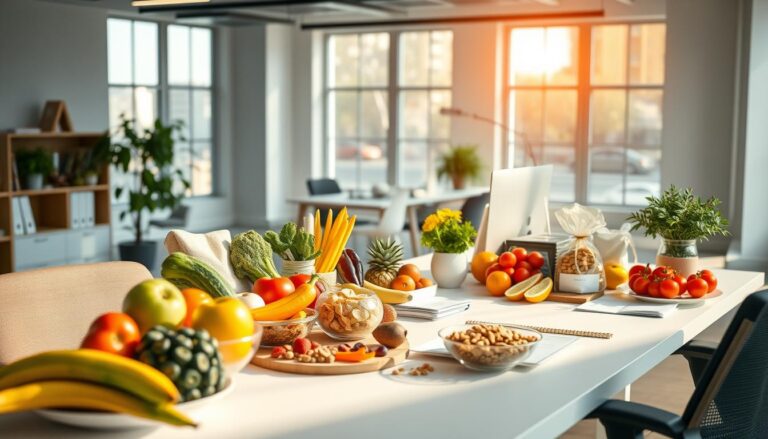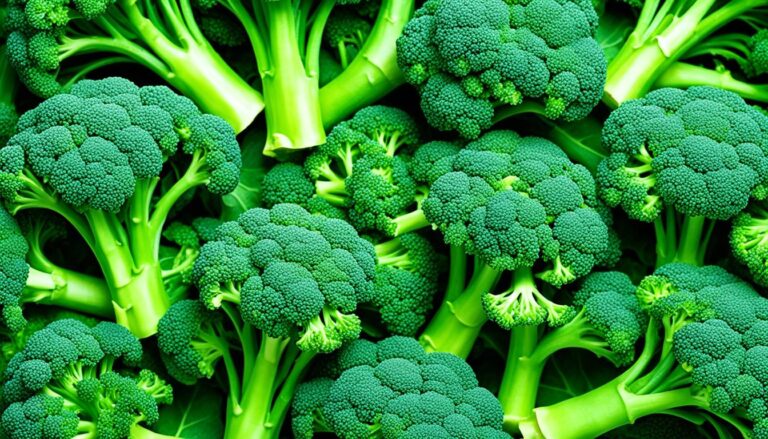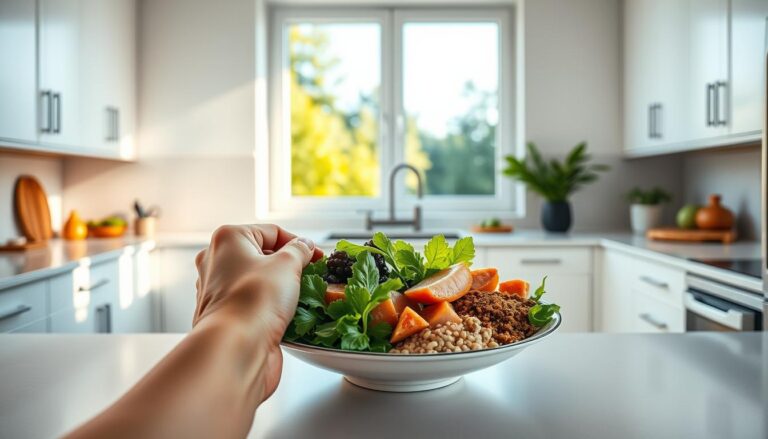Get ready to be amazed by these 10 fascinating food facts. Did you know dark chocolate can lower blood pressure and fight inflammation? Or that nectarines are full of vitamins C and A helping with weight loss and boosting immunity?
Discover the secrets behind our favorite foods. Learn about the protein-rich pistachios and the surprising origins of the Caesar salad. You’ll be surprised by what you find out.
Ever wondered about Oreos or the Canadian roots of California rolls and Hawaiian pizza? Dive in to uncover these surprising stories. Find out why cucumbers have more water than watermelons and how bananas can float. These hidden facts will change how you see your snacks and meals.
Key Takeaways
- Dark chocolate offers heart-healthy benefits, lowering blood pressure and reducing inflammation.
- Nectarines are a nutritional powerhouse, packed with vitamins C and A for weight loss, blood pressure regulation, and immune support.
- Pistachios are a rich source of protein, fiber, vitamins, and minerals, offering benefits for weight management, diabetes protection, and digestion.
- Cucumbers contain more water than watermelons, making them a low-calorie hydration option.
- Bananas can float in water and have a long history as one of the world’s oldest fruits.
The Origins of Food Favorites
Caesar Salad’s Surprising Birthplace
Many think the Caesar salad came from Rome, but it actually started in Tijuana, Mexico. In 1927, Caesar Cardini, an Italian immigrant, made the salad when he ran out of ingredients for guests. He mixed lettuce, croutons, Parmesan, and a special dressing. This created a dish that became a classic.
Today Tijuana celebrates this salad’s creation every June. The story shows how food history and food origins connect across the globe. It highlights how international cuisine has influenced our tastes.
| Fact | Details |
|---|---|
| Birthplace of Caesar Salad | Tijuana, Mexico 1927 |
| Inventor | Caesar Cardini, an Italian immigrant |
| Inspiration | A need to feed guests with limited ingredients |
| Annual Celebration | Tijuana hosts a festival each June in honor of the Caesar salad |

The Caesar salad was actually invented in Tijuana, Mexico back in 1927. Hotel Caesar owner Caesar Cardini wanted to make dinner for friends, but didn’t have much at hand.
The Caesar salad’s story shows how food history and food origins can surprise us. Exploring international cuisine reveals hidden stories and heroes that shape our tastes today.
What are 10 facts about food?
Explore the exciting world of food facts, food trivia, and food information with these 10 interesting facts:
- Dark chocolate can lower blood pressure and reduce inflammation.
- Nectarines are a high source of Vitamin C and A, and abundant in antioxidants.
- Chickpeas and almonds contain almost as much protein as steak.
- Brussels sprouts are packed with vitamins, minerals, and an anti-oxidant that can fight cancer.
- Pistachios are technically a drupe or fruit, not a nut.
- Caesar salad was invented in Tijuana, Mexico, not Italy.
- Avocados are a perennial fruit, first arriving in Australia in 1840.
- Spam is short for spiced ham.
- Oreos are vegan-friendly.
- Cucumbers contain more water than watermelons.
Get ready to be surprised by these food facts and food trivia. They will make you see the world of food information in a whole new light.
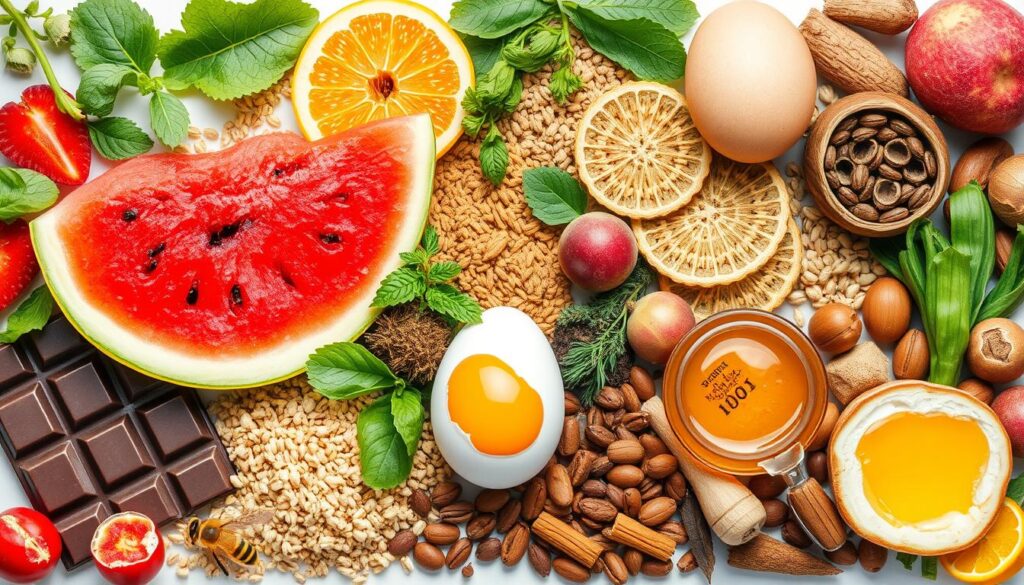
Fruits That Defy Expectations
Some fruits surprise even those who love food. Raspberries, strawberries, and blackberries are often thought of as berries. But they belong to the rose family. On the other hand, bananas, pumpkins, and lemons are technically berries.
Berries and Their Botanical Classifications
Fruits are classified based on how they grow from a flower’s ovary. They also look at the skin, flesh, and seeds. So, raspberries and strawberries don’t really fit the berry definition. They are aggregate fruits, made up of many ovaries from one flower.
- Raspberries, strawberries, and blackberries are members of the rose family.
- Bananas, pumpkins, and lemons are true berries, botanically speaking.
- Fruit classification is determined by the development from the ovary of a flower and the presence of skin, flesh, and seeds.
These fruit facts and botanical classifications show how diverse and complex fruits are. They challenge what we think a berry is. From roses to true berries, the world of unusual fruits is full of surprises.

Unexpected Sources of Common Ingredients
Many foods have ingredients from surprising places. These sources show how complex and sometimes odd modern food production can be.
For example, the red dye in candies and ketchups comes from cochineal beetles. Also, natural vanilla flavor in some items is actually from a beaver secretion used to mark their territory.
These facts might surprise us, but they show how complex our food’s origins are. Food science keeps revealing the hidden sources of food ingredients. This changes how we see what we eat every day.
| Ingredient | Unexpected Source |
|---|---|
| Carrageenan | Extracted from red seaweed, used as a binding agent in chocolate milk, ice creams, puddings, and yogurts. |
| Gypsum | A white rock, present in toothpaste to promote dental health, and a key ingredient in sheetrock and drywall. |
| Lanolin | Derived from sheep’s wool grease, found in cereals, providing Vitamin D, and used in baby formula, margarine, milks, and yogurts. |
| Wood Pulp | An additive in various foods like tomato sauces and salad dressings, can be found in certain grated cheese brands up to 10%. |
These unexpected food ingredients show the complex side of food science and food origins. They shape the foods we eat every day.
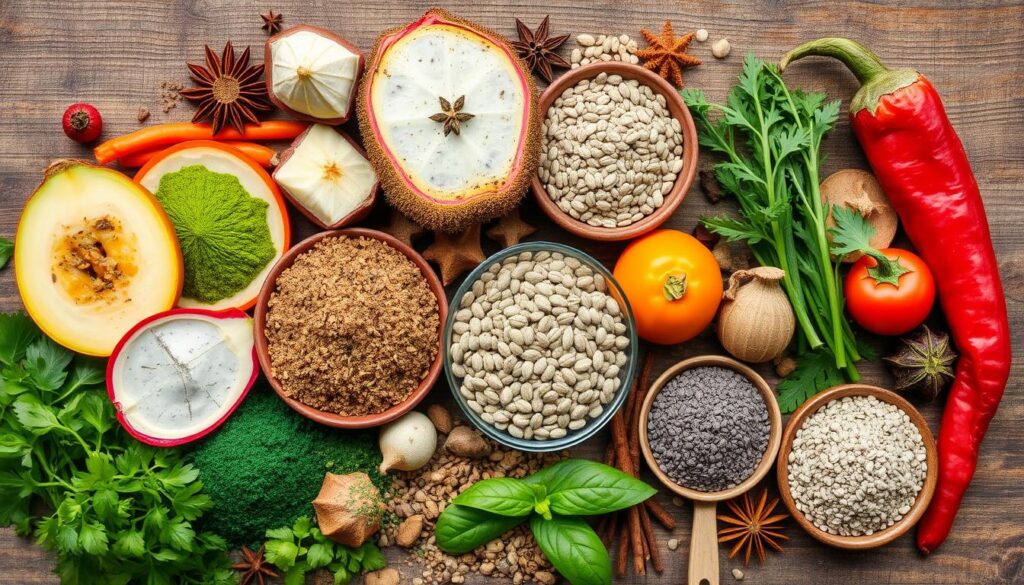
The FDA permits a certain percentage of natural contaminants in food, such as bugs, molds, rodent hair and droppings, and maggots. Mushrooms, for example, can contain a specific number of maggots per gram.
As consumers, knowing about the hidden food ingredients and food origins is key. By understanding these, we can make better choices about what we eat.
Mind-Blowing Food Production Facts
The world of food production is full of amazing secrets. From how hamburgers are made to turning broken candy into new products, the food production and food processing industries are always finding new ways to be efficient. They work hard to use less waste in the food supply chain.
The Journey of a Hamburger Patty
Did you know a single fast food hamburger patty can come from up to 100 cows? This is because big beef production gathers meat from many animals to make sure the final product tastes the same. Also, the filling in chocolate coated wafer bars, like Kit Kat, sometimes comes from broken bars turned into a paste. These facts show how creative and resourceful food makers are in making the foods we love.
| Fascinating Food Production Facts | Surprising Insights |
|---|---|
| Approximately 40% of food produced in the US goes to waste | Enough wasted food could feed the world’s hungry population |
| Over 20,000 edible plant species exist, but 75% of the world’s food supply comes from just 12 | Lack of diversity in the food system leaves it vulnerable |
| Pets in the US consume up to 30% of the country’s meat and animal products | Companion animals’ meat consumption rivals that of some nations |
These surprising facts about food production and food processing show how complex and efficient our food system is. From mixing different meats to using byproducts again, the food supply chain is a wonder of modern innovation.
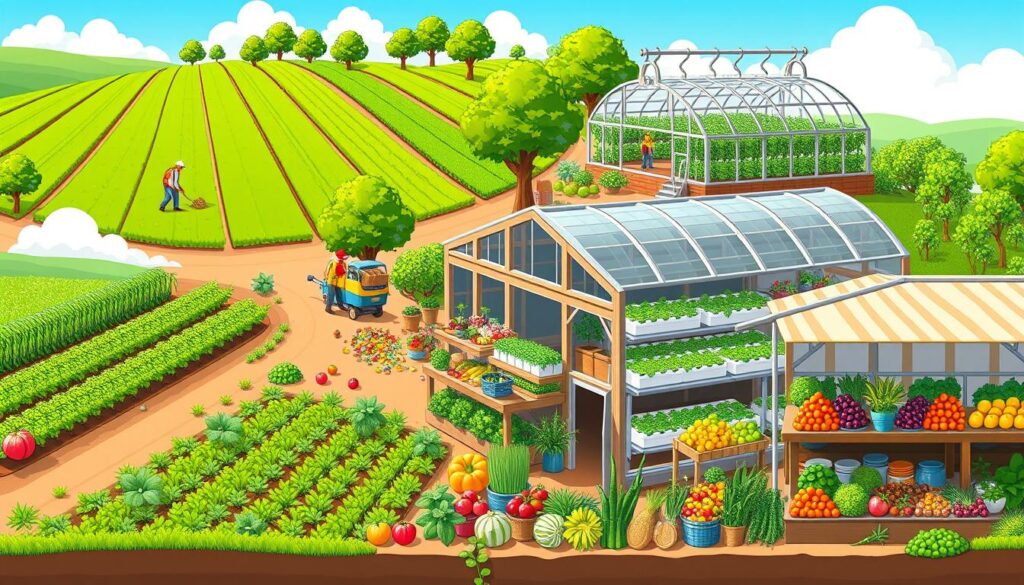
Nutritional Powerhouses in Unexpected Places
Some foods are nutritional powerhouses, even if they’re not called superfoods. Broccoli is a great example. It has more protein per calorie than steak, making it a top choice for plant-based protein. Chickpeas and almonds also have almost as much protein as steak, proving you can get enough protein without eating meat.
These foods show how you can get the nutrients your body needs from unexpected places. From the fiber in potatoes to the antioxidants in blueberries, there’s a lot to discover in the world of nutrition, healthy foods, and plant based diets.
- Cow’s milk typically has about 8 grams of protein per cup, while almond milk has around 1 or 2 grams per cup.
- All plant-based foods contain all 20 amino acids, including all nine essential amino acids.
- Soy-based foods like tofu, tempeh, and soy milk may have a protective effect on breast cancer risk.
- Potatoes are rich in vitamin C, potassium, fiber, and other nutrients.
- Eating whole fruits, including blueberries, grapes, and apples, can lower the risk of developing Type 2 diabetes.
Don’t be afraid to explore beyond the usual foods for nutrition. A wide variety of healthy foods and plant-based diets can open up a world of nutritional surprises. This can help support your overall health and well-being.
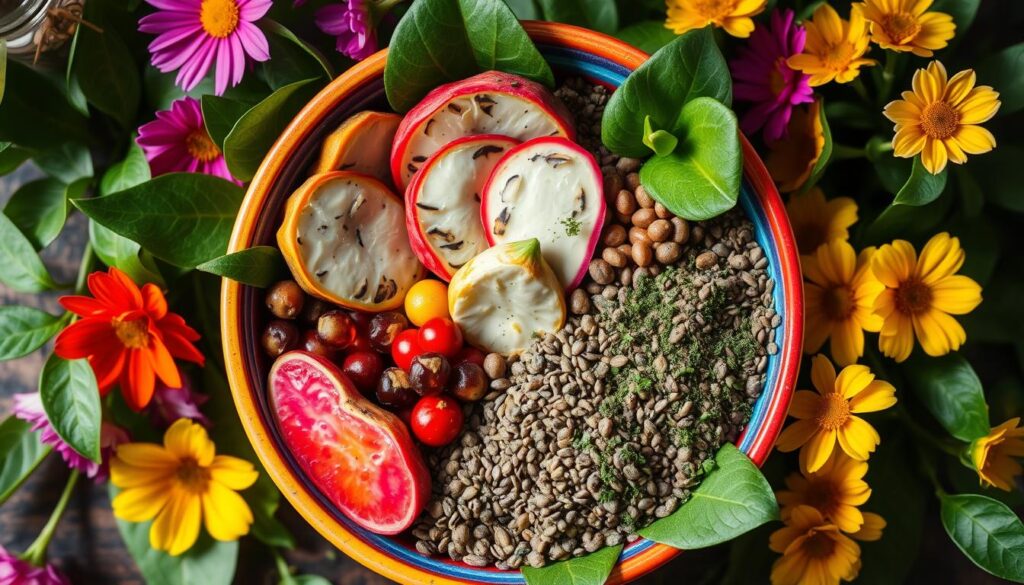
Origins of Familiar Food Names
Many common foods have interesting stories behind their names. For example, Spam comes from spiced ham. This canned meat has been a staple for many years. It’s made with pork, salt, water, potato starch, sugar, and sodium nitrate.
The name sandwich comes from the Earl of Sandwich, who created it for gambling without stopping. M&M’s, a beloved chocolate candy, was named after its founders, Mars and Murrie.
These stories show the rich history and names of everyday foods. They reveal the origins of names like Spam and sandwich. It’s a fun way to explore food history.
The Meaning Behind Spam
Spam is a famous food name with a unique story. It’s short for spiced ham. Spam doesn’t have exotic ingredients it’s made from pork, salt, water, potato starch, sugar, and sodium nitrate.
In the 1930s, Hormel Foods Corporation introduced Spam as a cheap and easy protein source. The name Spam was chosen to suggest spiced ham, showing its simple but tasty ingredients.
Spam is known for being an unusual food, but it’s very popular and important in culture. The name Spam has become a symbol of canned meat. Its story gives us a peek into food history and etymology of this famous food name.
Food and Space Exploration
The story of space food is full of innovation and problem-solving. It started with astronaut John Glenn eating applesauce in 1962. Now, space food systems are much more advanced, showing how far we’ve come.
The squeeze tube was a big step forward in food science and food technology for space. It let cosmonaut Yuri Gagarin enjoy beef and liver paste in 1961. This was a big moment for space food.
As we went further into space, we needed better food for astronauts. In 1995, the University of Wisconsin, Madison, grew the first space food in space with potatoes. This was a huge achievement.
Feeding people in space is hard because of gravity. This led to new ideas like HACCP, a food safety method used today. NASA is still working on new ways to feed astronauts in space.
| Fact | Statistic |
|---|---|
| Cost to send 1 pound of food to the International Space Station ISS | Thousands of dollars |
| Number of people who have flown into space since 1961 | More than 400 |
| New food items introduced on NASA’s first space station, Skylab, in 1973 | 72 |
| Shelf life of tortillas in space | Up to 2 years |
From applesauce to today’s advanced food systems, the journey of space food is fascinating. It shows how food science and food technology have evolved. As we explore space, the creativity in feeding our astronauts will keep inspiring us.
Conclusion
This article took us on a journey through the world of food facts. We learned that foods like pistachios, avocados, and bananas don’t always fit our expectations. It showed us how food production and space exploration have crossed paths.
Exploring food facts revealed the complex world behind what we eat every day. We found out how Nutella affects hazelnut production worldwide and the tiny creatures helping make chocolate. These facts make us see food in a new light.
These 10 fun food facts have broadened our knowledge and sparked curiosity. They take us from the origins of favorite dishes to the surprising facts about our food systems. This article has given us a peek into the rich world of facts, trivia, and information that shape our eating habits.
